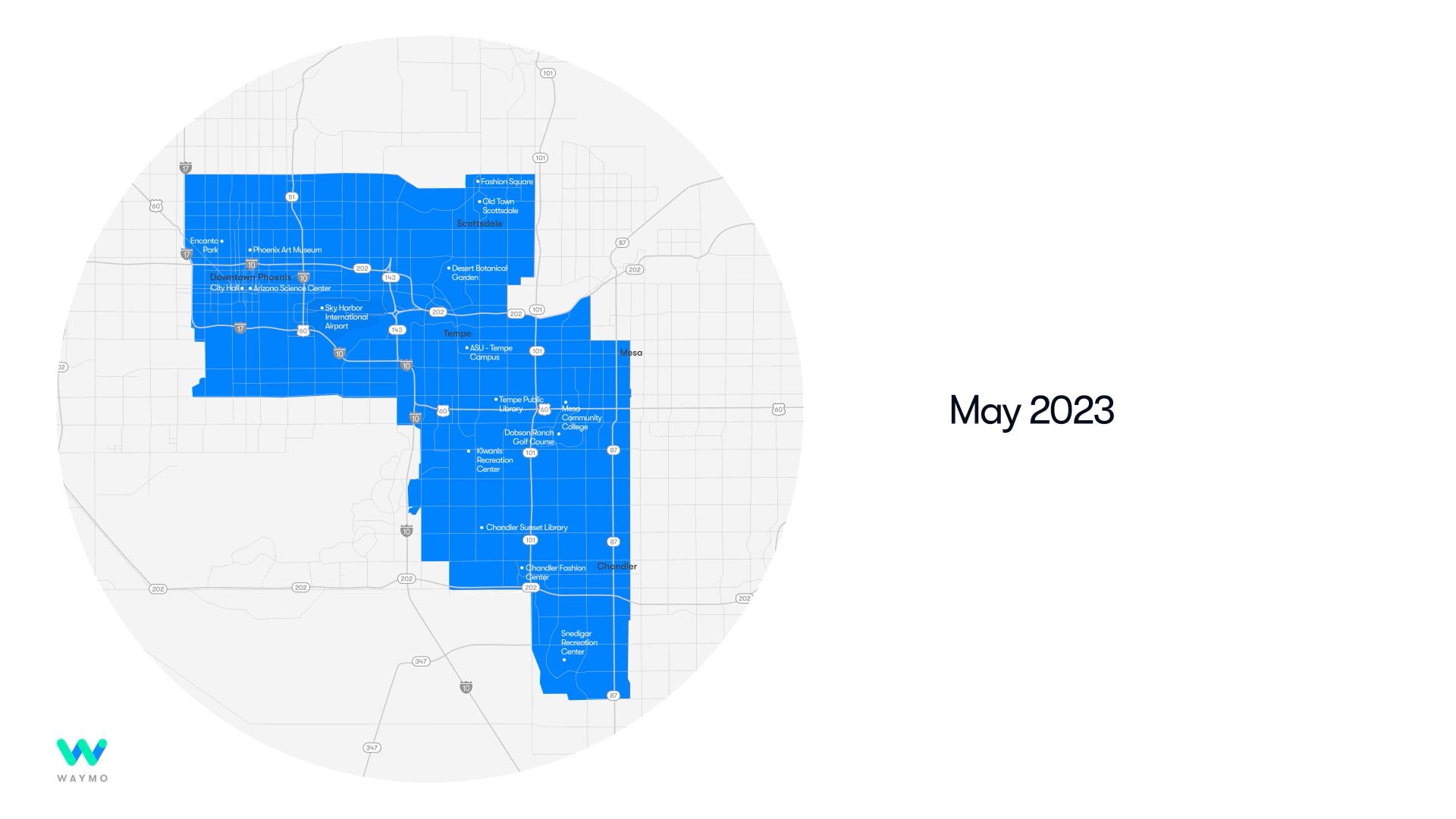
Senior Executive describes major expansion for Waymo’s service territory in Phoenix. (Source: Waymo)
Valley of the Sun Soon to Become Valley of Waymo Driverless Taxis with Expansion
More than an hour south of Seeflection.com headquarters lies the metropolitan area known as Phoenix, Arizona. For years now, Phoenix is one of the few cities which have allowed the training of driverless vehicles. So far it is not just been successful, it has been good enough for Waymo to expand its driving area. Meanwhile, they are removing some of the safety nets that have been used to train these vehicles.
According to an article from techcrunch.com, Phoenix is the only city in America allowed to charge fees for driverless taxi rides. Talk about cutting out the middleman.
The service area, which now includes Scottsdale, nearly all of Tempe, and larger sections of Chandler and Mesa, is 180 square miles in size. That’s about one-third of the 517-square-mile Phoenix metro area. Importantly, it connects downtown to Arizona State University in Tempe and other East Valley suburbs.
The former Google self-driving project under Alphabet is also adding a second location that accesses the Phoenix Sky Harbor International Airport. Riders can already get to the airport by taking a Waymo Robotaxi to the 44th Street Phoenix SkyTrain Station, which has frequent round-the-clock trains to the main terminals. Waymo robotaxis will now pick up and drop off passengers at the new 24th Street PHX SkyTrain Station.
For those not familiar with the street layout of Phoenix it is understandable if the above information means nothing to you. However, Phoenix is a reasonably easy town to figure out. It is laid out mostly in a north-south and east-west street pattern. and that certainly is helping the Waymo vehicles make less frightening decisions so to speak. There are not many hills or curves on Phoenix roadways.
“We’re clearly excited about the trajectory we’re going to be on and we believe we can hit 10x of that scale by next summer, roughly,” Waymo Chief Product Officer Saswat Panigrahi said.
Expanding Coverage Areas
It’s not clear what scaling things up ten times actually means. Waymo has been pretty stingy in releasing some of its data regarding the number of rides and length of these rides. But here are the steps Waymo has taken in the Valley Of the Sun since 2016.
It’s where the company began testing its self-driving Chrysler Pacifica minivans in suburbs like Chandler in 2016 and expanded the following year with its early rider program, which gave vetted members of the public access to the vehicles (always with a human safety driver behind the wheel).
Waymo removed employees and passengers from its test fleet in 2017, sending empty self-driving minivans onto the streets of greater Phoenix.
Waymo began in May 2018 allowing some early riders to hail a self-driving minivan without a human test driver behind the wheel. By December of that year, the company launched its commercial robotaxi service called Waymo One in Phoenix.
There have been others trying to introduce this type of robo-service but Waymo has been Waymo successful.
Not At Zero Problems Yet
However, there have been issues with Waymo. Even a fatality in Tempe, that was covered extensively in the media and settled in an Arizona courtroom.
Moreover, the success Waymo has found in the desert has not translated quite as well in San Francisco and California.
Waymo’s aspirations to add more self-driving vehicles to its fleet and expand its service area have hit some speed bumps. Videos of Waymo and rival Cruise vehicles clogging streets have circulated on social media, prompting city officials and some residents to criticize the technology. Earlier this year, San Francisco transportation officials sent protest letters to the CPUC asking the agency to slow down the companies’ expansion plans.
We have not even mentioned the number of 18-wheelers moving freight on our western highways with autonomous systems doing the navigating and the driving.
read more at techcrunch.com







Leave A Comment